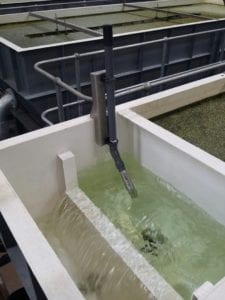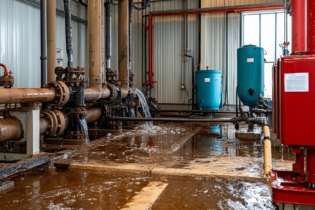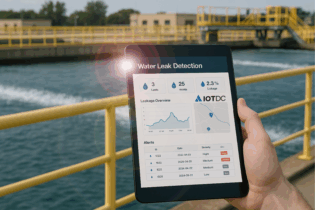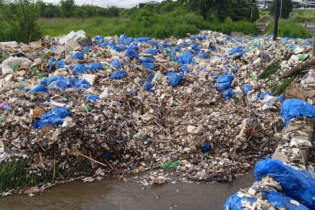One of the most robust, versatile and widely used unit operations in the treatment of wastewater worldwide is dissolved air flotation. With a growing market for wastewater reuse, the demand for these systems is expected to rise accordingly.
The importance of dissolved air flotation (DAF) systems in modern water treatment processes cannot be over-emphasised, explains Niel Kruger, process engineer, AquaPlan. Due to their highly efficient and cost-effective removal of suspended solids (SS), chemical oxygen demand (COD) and phosphorus in wastewater, DAF systems have now become an intrinsic part of the process of treating wastewater. A well-placed and well-designed DAF system offers unprecedented advantages for both upstream and downstream processes, as part of both the removal of pollutants in the wastewater, as well as the protection of membrane processes downstream of the DAF. AquaPlan has developed a robust, simple, easy-to-operate and versatile range of skid-mounted DAF systems, which encompass the dissolving of air, recirculation of white water, as well as the distribution and separation of particles in one simple system. The applications are broad, with the material of construction ranging from epoxy-coated carbon steel to 316 stainless steel – the material of choice in food and beverage and paper production applications. AquaPlan’s DAF systems have been utilised in the water treatment processes of industrial effluents from oil refineries, chemical plants, paper mills, and food and beverage processes. Two of the company’s most recent installations serve as pretreatment in the preparation of drinking water from the polluted Vaal River as a source, as well as the production of drinking water from raw sewage water in the Western Cape. According to Kruger, AquaPlan’s skid-mounted systems are well suited for installation into current processes as a pretreatment to both ultrafiltration (UF) and reverse osmosis (RO) systems, as well as post-treatment to biological processes such as membrane biological reactor (MBR), moving bed biofilm reactor (MBBR) and sequential batch reactor (SBR) systems. Coupled to well-designed biological systems, the removal and carry-over of suspended and organic matter to post-treatment processes pose a direct threat to the longevity and sustainability of membrane processes. The DAF system is very effective in removing oils, fats, grease, organic compounds, and very fine colloidal suspended solids in one easy process, which increases the lifespan of membranes.The future is reuse
Kruger believes the trend to incorporate DAF systems into wastewater treatment processes will accelerate over the next few years as the pressure to reuse wastewater grows exponentially. “South Africa is an arid country with a low average rainfall, where reservoirs and water storage capacities are extremely low. With the projected population growth over the next 10 years, coupled with the effects of global warming to shifting weather patterns, the use and reuse of wastewater in South Africa as a way to augment natural sources is an excellent opportunity for sustainability,” says Kruger. However, wastewater typically comprises all the unwanted and toxic elements with which a design engineer could be confronted, including organic and suspended matter, viruses, bacteria, and oils and fats – all of which need to be removed from the water source. A well-positioned DAF system is absolutely critical in removing most of these constituents, explains Kruger.The biggest challenge to this process is the protection of the equipment against fouling and blocking, as well as guarding against high energy and maintenance costs within the system. Placing individual unit operations in the most advantageous and sustainable positions will effectively mitigate these risks.
The AquaPlan DAF system comprises a fully integrated air saturation and recirculation pump system, flotation basin, lamella-pack integrated settler tubes, scum flotation system, and conical sludge removal underflow, all onto one integrated skid-mounted frame, ready for installation. The system is simple and quick to install, and covers a very small footprint for large flow rates compared to conventional clarification systems.







